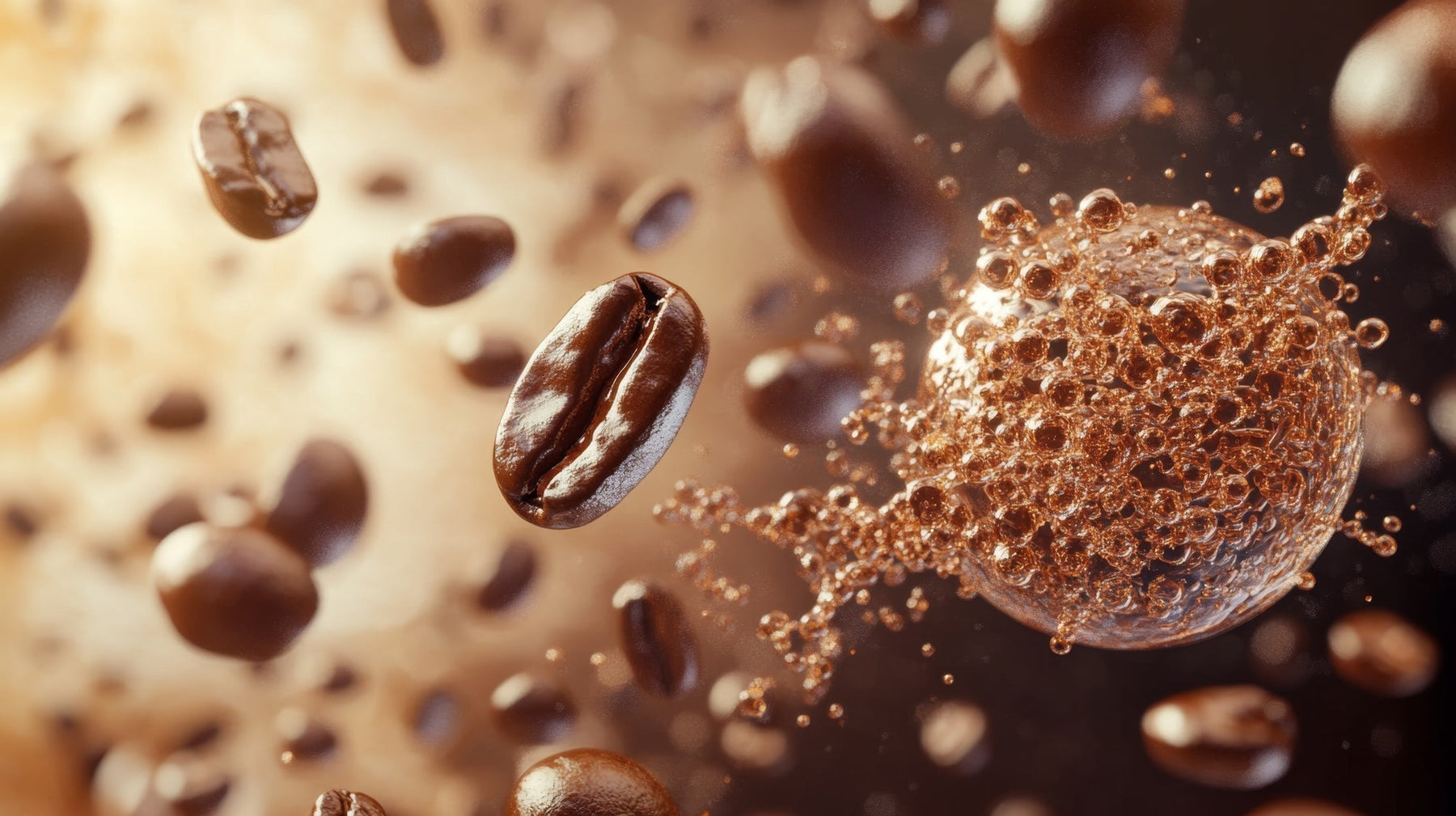
What is the Chemical Composition of Coffee?
Coffee has now been shown to offer numerous health benefits. It is also a delicious, comforting and satisfying beverage. But if you love your coffee, have you ever wondered exactly why it’s good for you and even why it’s so tasty?
The flavour of coffee and the health benefits it provides are the results of its unique chemical composition.
What is the chemical make-up of coffee?
1. Caffeine (1–2.5% by weight)
- Type: Alkaloid (purine derivative)
- Effect: Stimulates the central nervous system, increases alertness
- Health benefits: Potentially lowers the risk of Parkinson's disease, type 2 diabetes, and liver cancer.
- Negatives: Can lead to insomnia, anxiety, digestive issues, and increased heart rate. Overconsumption can also result in headaches, dizziness, and dehydration
- Impact on flavour: Bitter tasting and influences how we perceive flavour by affecting taste receptors in the brain. Caffeine can enhance or mask certain flavours, altering the perceived sweetness.
2. Chlorogenic Acids (CGAs) (5–12%)
- Type: Polyphenols (antioxidants)
- Effect: Contribute to bitterness and acidity. May convert into aroma compounds and contribute to the colour of the final bean.
- Health benefit: Potential antioxidant and anti-inflammatory effects.
- Negatives: High doses of CGA can lead to some negative effects, particularly concerning blood pressure and homocysteine levels.
- Impact on flavour: Significantly influences coffee flavour, particularly through their transformation during roasting. They contribute to sourness, bitterness, and astringency.
3. Lipids (Fats and Oils) (10–15%)
- Mostly in green beans.
- Found in: Coffee bean cell membranes and protective wax layer.
- Components: Triglycerides and Diterpenes (e.g., cafestol, kahweol).
- Negatives: Diterpenes can raise cholesterol if coffee is unfiltered.
- Impact on flavour: During roasting, lipids contribute to the formation of volatile aroma compounds through reactions including autoxidation and decomposition. These reactions, along with the lipophilic nature of some odorants, allow lipids to absorb and retain hydrophobic flavour components, significantly impacting the overall taste of the coffee.
4. Carbohydrates (30–50%)
- Includes: Polysaccharides - cellulose, galactomannans and simple sugars such as sucrose (up to 9%).
- Impact on flavour: During roasting, the carbs caramelize and participate in Maillard reactions. The Maillard reaction is a chemical reaction between amino acids and reducing sugars that creates melanoidins, the compounds that gives browned food its distinctive flavour. The reaction was first described in 1912 by French chemist Camille Maillard after whom it is named.
- Health benefits: Coffee contains soluble fibre, which can act as a prebiotic, feeding beneficial bacteria in the gut and potentially improving digestive health.
5. Proteins & Amino Acids (10–15%)
- Important in Maillard reactions with sugars
- Impact on flavour: Influence flavour development during roasting.
- Health benefits: Glycine, an amino acid found in coffee, is a precursor to glutathione, a powerful antioxidant that helps protect cells from damage. Antioxidants derived from the amino acids in coffee, can help combat oxidative stress, which is linked to various diseases.
6. Water (10–13% in green beans)
- Evaporates during roasting
- Drives bean expansion and crack sounds
7. Organic Acids
- Coffee contains organic acids in varying quantities according to the bean and roasting process.
- Impact on flavour: The interplay of the acids, along with other compounds, creates the complex sensory experience delivered by coffee. The roasting process significantly impacts the acid profile, with some acids decreasing while others are formed or increase in concentration. For example, dark roasts tend to have higher levels of acetic acid due to the breakdown of other acids. The acids in coffee include:
-
- Chlorogenic acids: These make up the highest concentration of organic acids in coffee and contribute to both acidity and bitterness.
- Quinic acid: This acid is formed during roasting from chlorogenic acids and can contribute to bitter and astringent flavours.
- Citric acid: Found in high levels in green coffee, it can contribute to a citrusy flavour.
- Malic acid: Associated with a tart, apple-like acidity.
- Acetic acid: Produced during processing and roasting, it can add a sharp or vinegar-like note.
- Lactic acid: May contribute to a creamy texture and fuller body. Phosphoric acid: Can add a sparkling, blackcurrant-like acidity.
- Negatives: Coffee acidity can cause issues like acid reflux and stomach upset for some individuals, particularly those with existing digestive conditions. Coffee’s acidity can also impact tooth decay.
- Health benefits: Coffee's chlorogenic acids are antioxidants that may offer some health benefits, but the overall impact is still being researched.
8. Volatile Compounds
- Over 800 compounds generated during roasting including aldehydes, ketones, esters, furans and pyrazines.
- Impact on flavour: Major contributors to aroma and flavour creating fruity, nutty, smoky, floral and spicy notes.
- Negatives: Some volatile compounds, like furans, have been associated with potential health concerns. Research is ongoing to understand the impact of various volatile compounds on human health and to mitigate the formation of potentially harmful compounds during roasting.
Conclusions
Wow! Coffee is surprisingly complex isn’t it? Your daily Americanos and cappuccinos are loaded with elements that you probably didn’t know were there. Most are positives that improve aroma, flavour and even your health. Its easy to see that coffee can impact our bodes in a variety of ways and there’s still more to learn about our favourite beverage. Watch this space!



Leave a comment